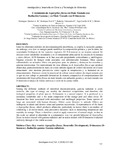
Please use this identifier to cite or link to this item:
http://ricaxcan.uaz.edu.mx/jspui/handle/20.500.11845/810Full metadata record
| DC Field | Value | Language |
|---|---|---|
| dc.contributor | 6207 | es_ES |
| dc.contributor.other | https://orcid.org/0000-0002-7081-9084 | es_ES |
| dc.coverage.spatial | México | es_ES |
| dc.creator | Domínguez Sánchez, Aleandro | - |
| dc.creator | Rodríguez Neri, Salvador | - |
| dc.creator | Bañuelos Valenzuela, Romulo | - |
| dc.creator | Vega Carrillo, Héctor René | - |
| dc.creator | Méndez Albores, Abraham | - |
| dc.date.accessioned | 2019-03-19T19:21:04Z | - |
| dc.date.available | 2019-03-19T19:21:04Z | - |
| dc.date.issued | 2018 | - |
| dc.identifier | info:eu-repo/semantics/publishedVersion | es_ES |
| dc.identifier.issn | 2448-7503 | es_ES |
| dc.identifier.uri | http://localhost/xmlui/handle/20.500.11845/810 | - |
| dc.identifier.uri | https://doi.org/10.48779/7mec-dj06 | es_ES |
| dc.description | Among the different methods of microbial decontamination, gamma radiation is used; however, this type of energy can modify the chemical composition; and therefore, the biological properties of plant species. D-limonene is a natural terpene. It is produced as a secondary metabolite and is the main component of the orange peel and other citrus. D- limonene has been associated with antioxidant and antifungal properties. Some species of fungi are associated with human diseases. Others cause diseases in animals. Others are pathogenic to plants and destroy crops and generate mycotoxins. A representative of the latter is Aspergillus flavus, which produces aflatoxins, particularly in maize; there is no method of controlling it in stored maize, only preventive measures such as monitoring temperature and humidity in storage. There is therefore a need to apply conservers of natural origin, so that in this work we aimed to determine in a comparative way the growth behavior of Aspergillus flavus in maize treated with gamma radiation and in maize treated with D-limonene evaluated indirectly through of the viable account. | es_ES |
| dc.description.abstract | Entre los diferentes métodos de descontaminación microbiana, se emplea la radiación gamma; sin embargo, este tipo de energía puede modificar la composición química; y por lo tanto, las propiedades biológicas de las especies vegetales. El D-limoneno es un terpeno natural. Se produce como metabolito secundario y es el componente principal de la cascara de la naranja y otros cítricos. Al D-limoneno se le han asociado propiedades antioxidantes y antifúngicas. Algunas especies de hongos están asociadas con enfermedades humanas. Otras causan enfermedades en animales. Otras son patógenas para las plantas y destruyen las cosechas y generan micotoxinas. Un representante de estas últimas es el Aspergillus flavus que produce aflatoxinas, particularmente en maíz; no existe método alguno de control del mismo en el maíz almacenado, solo medidas preventivas como vigilar la temperatura y la humedad en su almacenamiento. Entonces existe la necesidad de aplicar conservadores de origen natural, por lo que en este trabajo se pretendió determinar de manera comparativa el comportamiento del crecimiento del Aspergillus flavus en maíz tratado con radiación gamma y en maíz tratado con D-limoneno evaluado de forma indirecta a través de la cuenta viable. | es_ES |
| dc.language.iso | spa | es_ES |
| dc.publisher | Universidad Autónoma de Nuevo León | es_ES |
| dc.relation.uri | generalPublic | es_ES |
| dc.rights | Atribución-NoComercial-CompartirIgual 3.0 Estados Unidos de América | * |
| dc.rights.uri | http://creativecommons.org/licenses/by-nc-sa/3.0/us/ | * |
| dc.source | Investigación y Desarrollo en Ciencia y Tecnología de Alimentos, Vol. 3, 2018m pp. 157-166 | es_ES |
| dc.subject.classification | BIOLOGIA Y QUIMICA [2] | es_ES |
| dc.subject.other | Aspergillus flavus | es_ES |
| dc.subject.other | Desarrollo | es_ES |
| dc.subject.other | D-limoneno | es_ES |
| dc.subject.other | Radiación gamma | es_ES |
| dc.subject.other | Gamma radiation | es_ES |
| dc.title | Crecimiento de Aspergillus flavus en Maíz Tratado con Radiación Gamma y en Maíz Tratado con D-limoneno | es_ES |
| dc.type | info:eu-repo/semantics/article | es_ES |
| Appears in Collections: | *Documentos Académicos*-- UA Ciencias Nucleares | |
Files in This Item:
| File | Description | Size | Format | |
|---|---|---|---|---|
| Crecimiento de Aspergillus flavus en Maíz Tratado.pdf | 582,9 kB | Adobe PDF |  View/Open |
This item is licensed under a Creative Commons License
